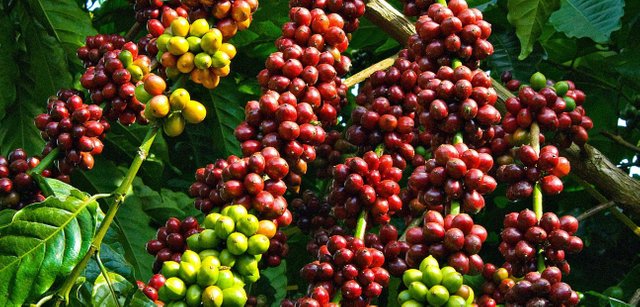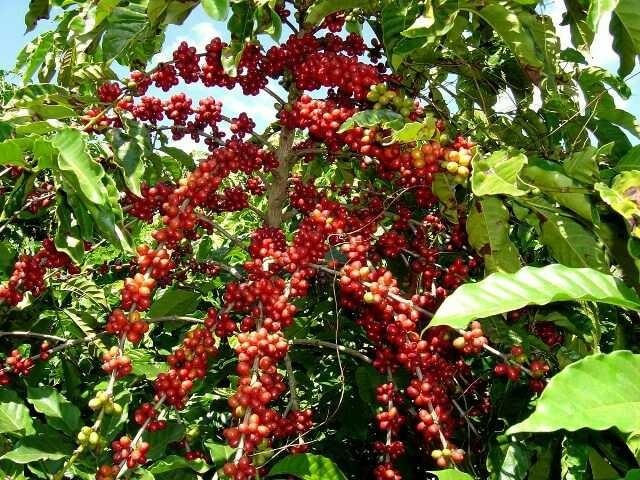Coffee is a beverage that has been roasted coffee beans and smoothed into powder. Coffee is one of the world's most cultivated commodities in more than 50 countries. Two common coffee tree varieties are Robusta Coffee (Coffea canephora) and Arabica Coffee (Coffea arabica).

The processing of coffee before it can be drunk through a long process that is from the harvesting of coffee beans that have been cooked either by machine or by hand then done the processing of coffee beans and drying before it becomes coffee. The next process is penyangraian with varying degrees degree. After penyangraian coffee beans milled or smoothed into a coffee powder before coffee can be drunk.

History records that the discovery of coffee as a nutritious drink and berenergipertama times discovered by the Nation Etiopiadi African continent about 3000 years (1000 BC) ago. Coffee then continues to grow until today became one of the most popular beverages in the world consumed by various circles of the community [need referral] Indonesia alone has been able to produce more than 400 thousand tons of coffee per year. In addition to the interesting flavors and aroma, coffee can also reduce the risk of cancer, diabetes, gall stones, and various heart diseases (cardiovascular).

The word coffee itself originally comes from the Arabic: قهوة qahwah which means strength, because at first coffee is used as a high-energy food. [9] The word qahwah is again changed to kahveh which comes from the Turkish language and then changed again into koffie in Dutch. [Needs references] The use of the word koffie is immediately absorbed into Indonesian into a known coffee word today.
History coffee
Started in AfricaSharing
The era of the discovery of coffee beans began around 800 BC, another opinion says 850 AD At that time, many people in the African Continent, especially Ethiopians, consumed coffee beans mixed with animal fats and grapes to meet the needs of protein and energitubuh. The invention of coffee itself happened by accident, when a shepherd named Khalid-an Abyssinian-observed her flock of herding goat who remained awake even after a sixth sun, after eating a kind of berries. He also tried to cook and eat it. This custom continued to grow and spread to various countries in Africa, but the method of presentation still uses conventional methods. [It took a few hundred years later, these beans were brought through the Red Sea and arrived in Arabia with a more advanced presentation method.

Role in body Edit
The content of caffeine in coffee has a diverse effect on every human being. [Need a reference] Some people will experience the effect directly, while others do not feel it at all. [Needs references] This is related to the genetic traits that each individual has associated with the body's metabolic ability to digest caffeine. [43] Metabolism of caffeine occurs with the help of cytochrome P450 1A2 enzyme (CYP1A2). [2] There are 2 types of enzymes, namely CYP1A2-1 and CYP1A2-2. [44] People who have CYP1A2 -1 enzymes are able to rapidly and efficiently cata- date their caffeine so that the effects of caffeine can be felt significantly [citation needed] The CYP1A2-2 enzyme has a slow rate of caffeine metabolism so most people with this type do not feel the health effects of caffeine and even tend to cause negative effects.